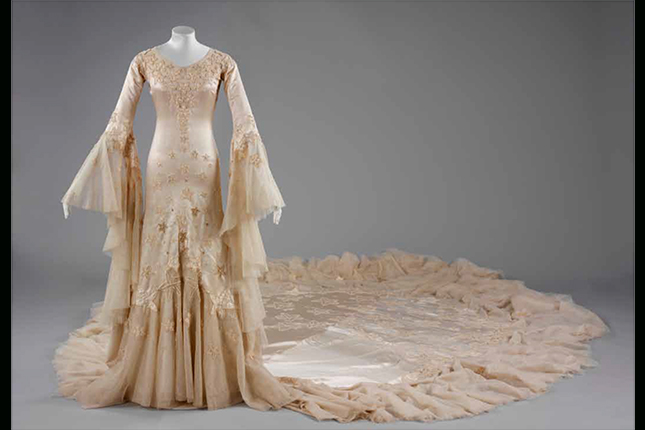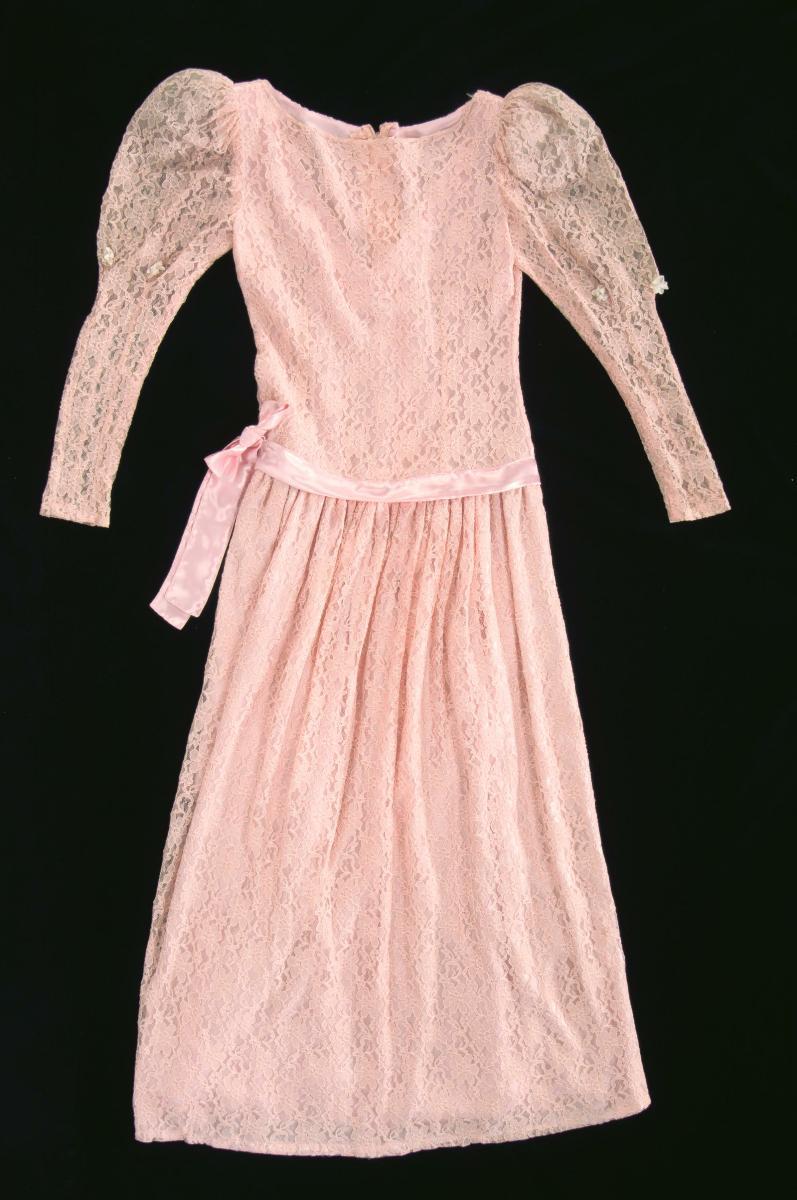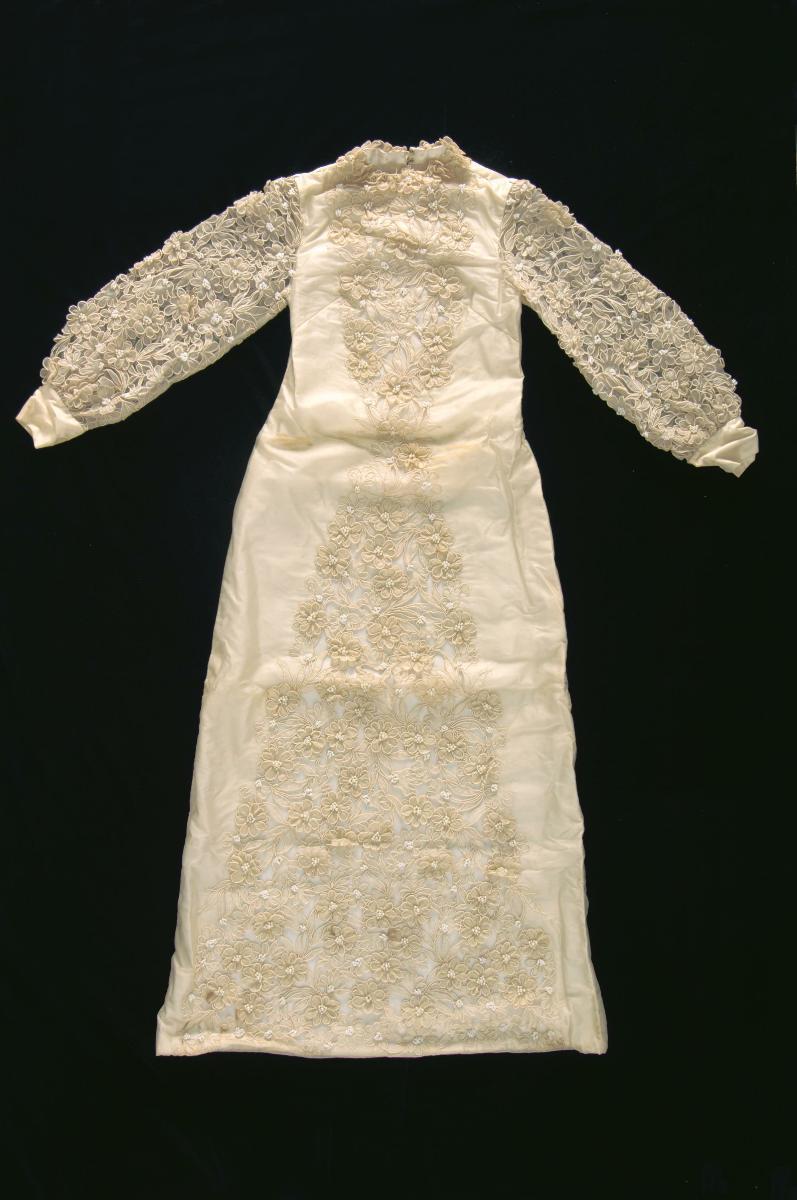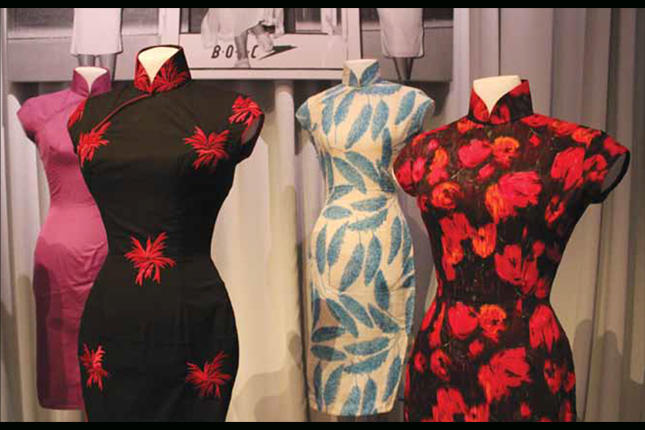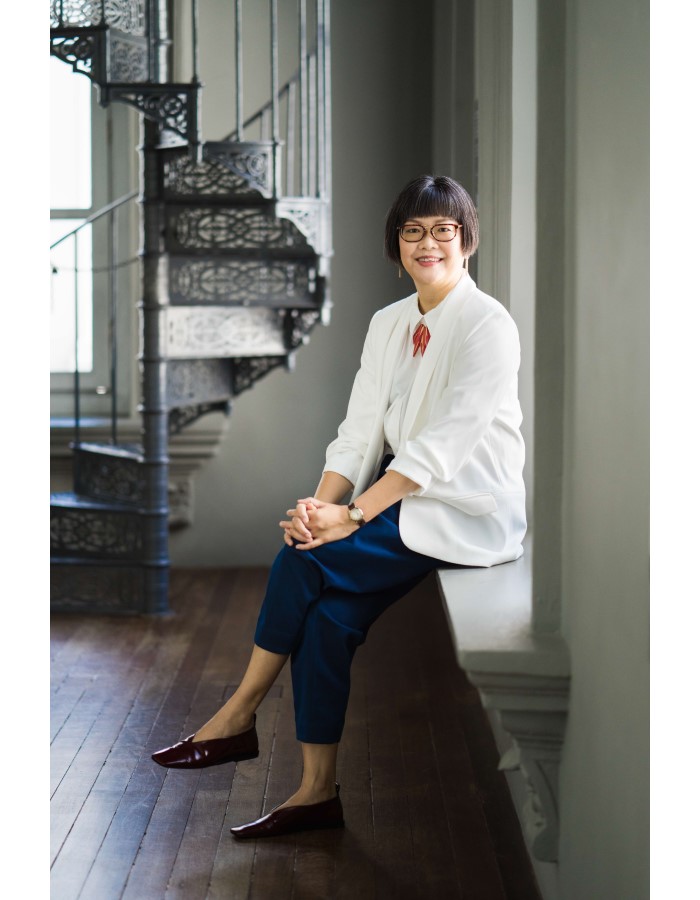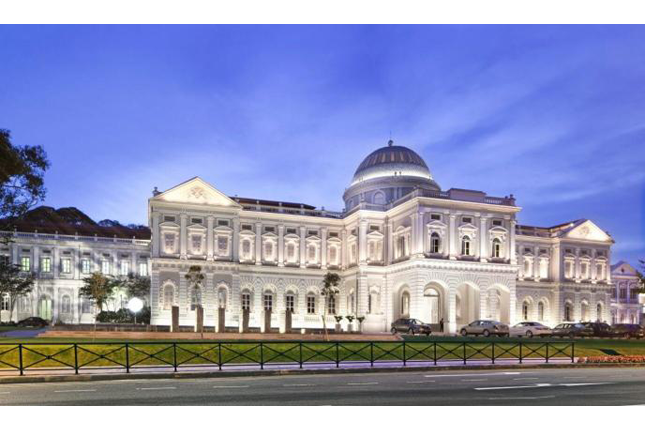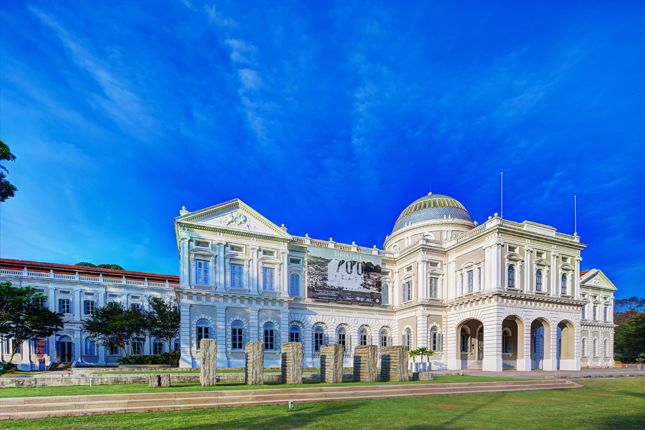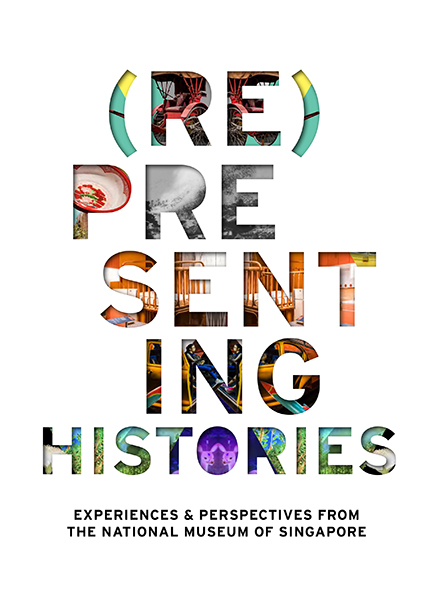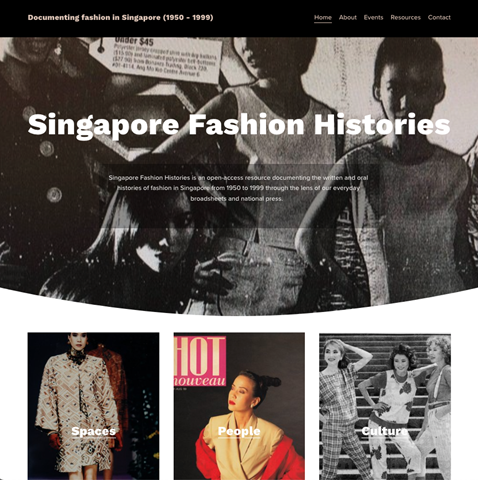TL;DR
In August 2012, visitors to the National Museum of Singapore were treated to a fantastic collection of bridal costumes and accessories from the Victoria and Albert Museum in London for the very first time.
Text by Chung May Kheun
Be Muse Volume 5 Issue 3 – Jul to Sep 2012
In August 2012, visitors to the National Museum of Singapore were treated to a fantastic collection of bridal costumes and accessories from the Victoria and Albert Museum in London for the very first time. The exhibition told the history of the wedding dress and its enduring popularity from the early 1800s to the present day, through fascinating accounts about the lives of the wearers, their fashion choices and the economic and social conditions of the time through the eight major themes outlined in this article. Also on display were gowns by celebrated designers, including Charles Frederick Worth, Charles James, Christian Lacroix, John Galliano, Norman Hartnell, Vera Wang, Vivienne Westwood and Zandra Rhodes. Sumptuous wedding dresses worn by celebrities such as Dita Von Teese and Gwen Stefani were also be on display. In conjunction with the exhibition, the National Museum of Singapore also presented at the Canyon a small display of its own collection of Western and traditional wedding costumes worn by the various ethnic communities in Singapore.
Creating Traditions: 1800 - 1840
Today, the white wedding dress has become a universal symbol of the bride. It is worn by brides of different faiths and nationalities on their wedding day, even in countries where it is not a tradition to do so. However, in 18th century Britain, white was just one of the several colours worn by brides. While silk woven with gold and silver were preferred amongst the royal and aristocratic families, most women chose fabrics with colours and motifs on them. This was because many women would wear their wedding dresses again after the wedding day and white would hence be less practical.
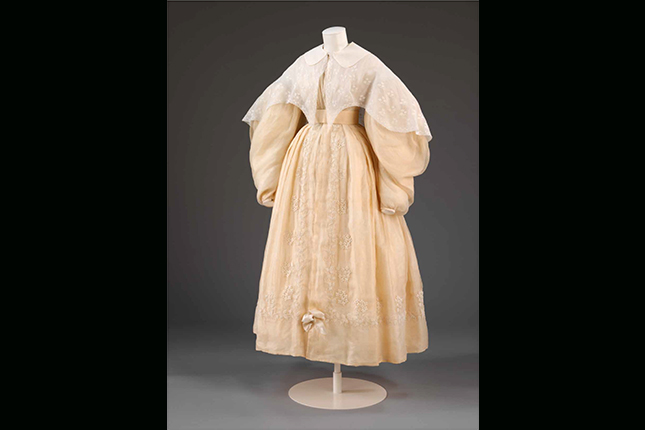
Given by Miss Gaster. V&A: T.63-1973 ©Victoria and Albert Museum / V&A Images.
Since the beginning of the 19th century, most weddings in Britain were conducted in the church or at home. Church weddings were conducted between 8am and midday and women had to cover their heads and arms. Families of high rank could purchase a licence to marry anywhere they wished, most of the time at home, where brides could put on short-sleeved dresses.
The Victorian Bride and Bridegroom: 1837 - 1901
White only became the dominant colour for wedding dresses in the 19th century when Queen Victoria (reigned 1837 to 1901) wore white when she married Prince Albert in 1840. The veil and orange-blossom wreath also became popular at that time.
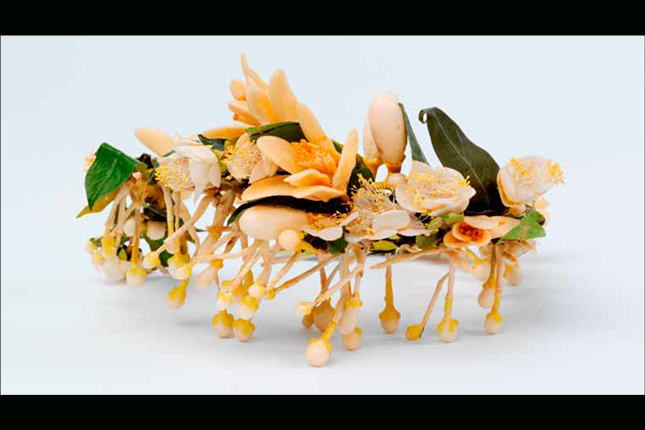
©Victoria and Albert Museum / V&A Images
In addition, fresh or artificial flowers like roses and the myrtle, chosen for their association with love, were used for headdresses and trimmings. Handkerchiefs and fans were also popular accessories. When honeymoons became more popular from the mid- 19th century onwards, brides would include a new bonnet, gloves and a bag as part of the accessories for their going away outfit. Many of these wedding items were preserved and some became family heirlooms.
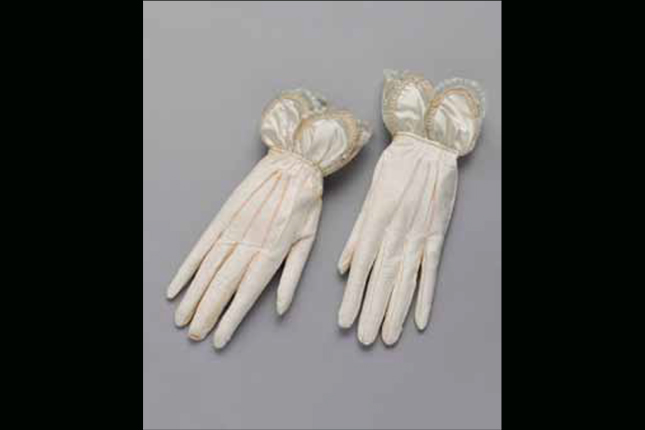
©Victoria and Albert Museum / V&A Images
While the bride’s dress changed with fashion, the bridegroom adopted a standard wedding outfit consisting of a dark grey or black coat worn with light coloured trousers and a white waistcoat. It only became customary for the men to wear new clothes on their wedding day during the reign of Queen Victoria.
Artistic Styles: 1900 - 1930s
Historical costumes were an important source of influence on bridal dresses at the end of the 19th century. These styles, described by some writers as ‘picturesque’, appealed to women who wanted to express their distinctive identity from other brides. Evening wear was another source of inspiration in terms of the fabric, cut, construction and decoration, especially after the First World War (1914 - 1918). To add a touch of glamour to these dresses, luxurious fabrics such as metallic lamés and lace were used. At the same time, a group of young and creative British designers like Norman Hartnell (1901 - 1979) began to set up couture houses in London. Paris however, continued to dominate women’s fashion internationally.
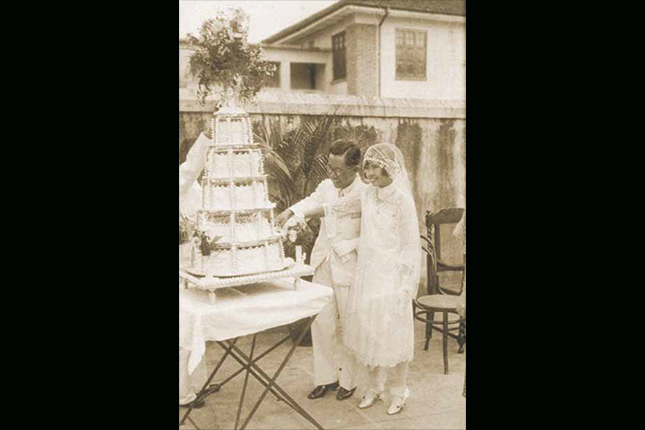
The Society Wedding: 1920s - 1930s
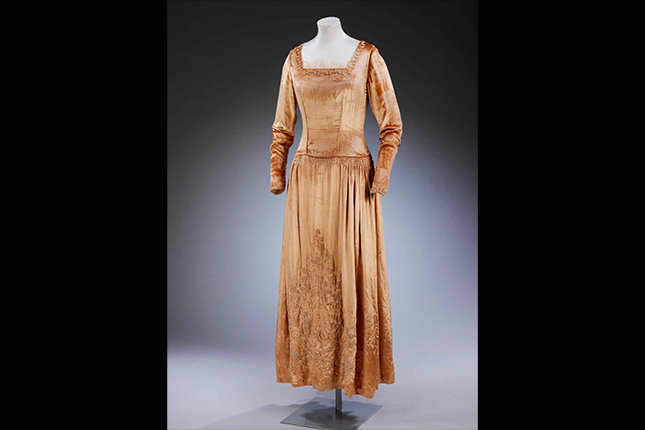
©Victoria and Albert Museum / V&A Images.
In the 1920s and 1930s, weddings in British high society became occasions of great significance for the public as a result of intense media coverage in the form of photographs and gossip columns. One such display at the exhibition is the bridal dress which belonged to socialite Margaret Whigham. Designed by Norman Hartnell, the slender ivory satin sheath gown is characterised by embroidery, appliquéd and cut work flowers embellished with beads and pearls. The dress also features a 3.6-metre train.
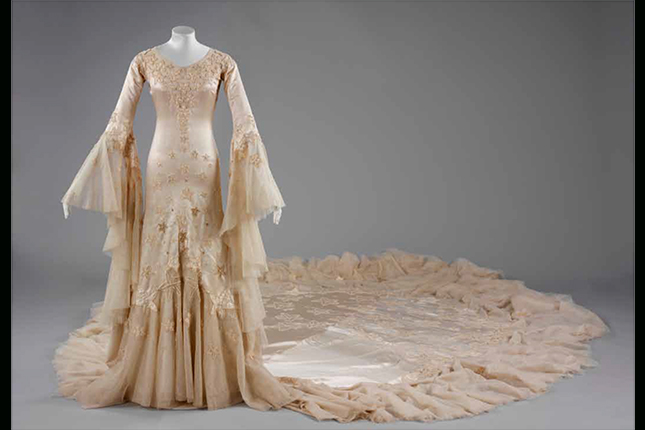
©Victoria and Albert Museum / V&A Images.
From Austerity to the ‘New Look’:
1939 - 1951
In 1939, war broke out in Europe and clothes rationing was introduced in Britain in 1941. To cope with the shortage of cloth, resourceful ladies began to make wedding dresses from unrationed materials such as net curtains, upholstery fabric and even parachute silk. Some married in their service uniform or wore a smart suit or afternoon dress. When the war ended in 1945 and clothes rationing in Britain lifted four year later, women were fascinated by the feminine and luxurious ‘New Look’ introduced by French couturier Christian Dior.
Innovation and Individuality:
1950s - 1970s
During the post-war years, quality ready-to-wear clothing competed with the high fashion market for consumers. Wedding dresses were available to women at department stores, the salons of bridal wear companies and bridal boutiques. By the time Europe’s economy recovered in 1957, a group of young entrepreneurs, tastemakers and designers had appeared and transformed London into a city that was youthful, trendy and anti-establishment. Bridal designs catered to a group of younger consumers. While the design of the bridal dress changed according to fashion, it continued to be formal and suitable for church wedding.
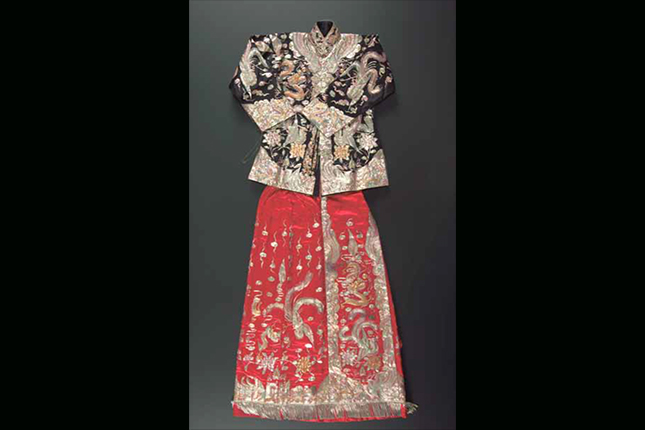
Collection of the National Museum of Singapore.
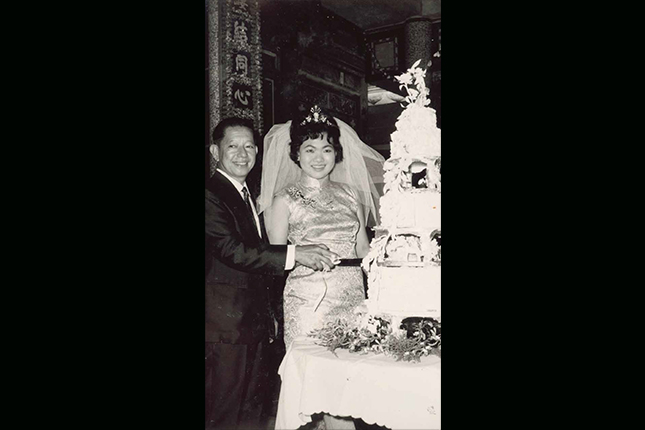
Collection of the National Museum of Singapore.
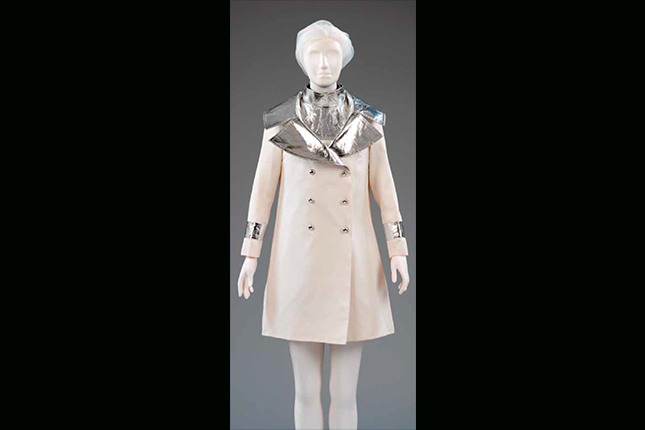
Nostalgia, Romance, and the Modern Age: 970s – Early 2000s
Brides of the 1970s had a preference for romantic dresses, inspired by the Victorian era to the 1940s. However, this was quickly replaced by the exaggerated fashion of the 1980s, when bridal wear was feminine with a fitted bodice, small waist, full sleeves and a sweeping skirt. One of the most iconic wedding dresses of this period was the fairytale wedding gown worn by the late Princess Diana who wedded Charles, the Prince of Wales, in 1981. It was only in the 1990s when the connection between wedding clothes and contemporary fashion was revived. One of the most significant bridal designers credited for this revival was American designer Vera Wang.
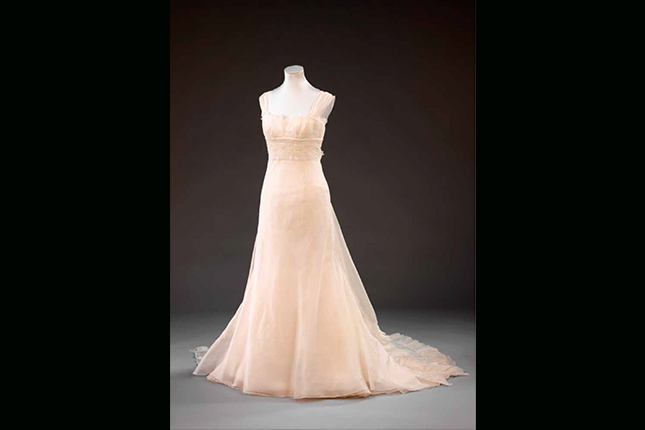
Lent by the American Friends of the V&A.
The Celebrity Wedding: 1990s - 2000s
Since the 1990s, the Internet and popular celebrity and bridal magazines have fuelled public interest in celebrity weddings. The intense media coverage of such weddings has boosted the demand for dresses with similar designs but with more affordable price tags. The wedding industry has also benefited from such celebrity wedding coverage which encourages women to spend more on their wedding celebrations. As women marry later, many already have an established career and hence could afford to spend lavish sums on their wedding.
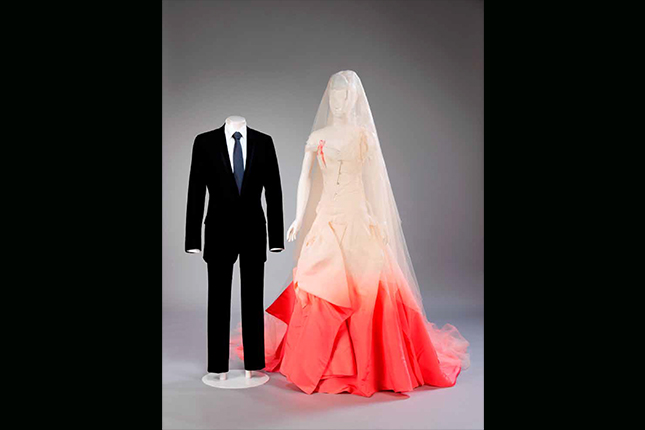
The Wedding Dress in Singapore
In Singapore, the Eurasians and Straits-born Chinese were probably the first to adopt Western wedding customs, including the wearing of Western bridal costumes at the turn of the 20th century. This was followed by the Chinese and Indians who converted to Christianity in the 1920s and 1930s.
The wearing of the Western wedding dress in Singapore became popular only in the late 1940s after the Second World War (1942 - 1945). Prior to this, the different ethnic communities in multi-racial Singapore were dressed in their traditional and elaborate wedding garments, although some wore the Western bridal attire at the wedding dinner. Despite differences in culture, lifestyle and the clothes they wear, these communities share a similar view on the idea of marriage: it is regarded as important by all and as a means to start a new family and extend existing family ties. It also marks a new beginning for two people and the marriage is celebrated at the wedding.
There are several reasons for the increased popularity of the Western wedding dress during the post-war period. First, with the influx of Western ideas and culture, it was considered modern to wear the Western bridal dress. Second, it was considered more practical compared to the elaborate and expensive traditional bridal garment. Many complex traditional customs and rituals have also been simplified or done away with to accommodate the changing lifestyles of Singaporeans. Moreover, since the introduction of the Women’s Charter in 1962, monogamous marriages registered at the Registry of Marriages have been the only legally recognised and socially accepted form of marriage in Singapore.
However, traditional wedding customs and costumes have not disappeared completely. Instead, they have been integrated into the modern lifestyle of wedding couples in Singapore. Innovative couples would incorporate elements of the Western wedding attire into their traditional garments. For example, some brides would wear the Western tiara and the veil together with their traditional outfits. For church weddings, Indian brides would put on a white or gold sari richly embroidered in silver or gold and a veil over their heads. In addition, the wearing of traditional wedding costumes is still being observed at the wedding ceremonies of the different communities today. For instance, the bridal sarong kebaya in songket, a traditional Malay fabric embroidered with gold or silver threads, continues to be a popular costume worn by the Malay bride at the bersanding or sitting-in-state ceremony which confers social recognition on the marriage.
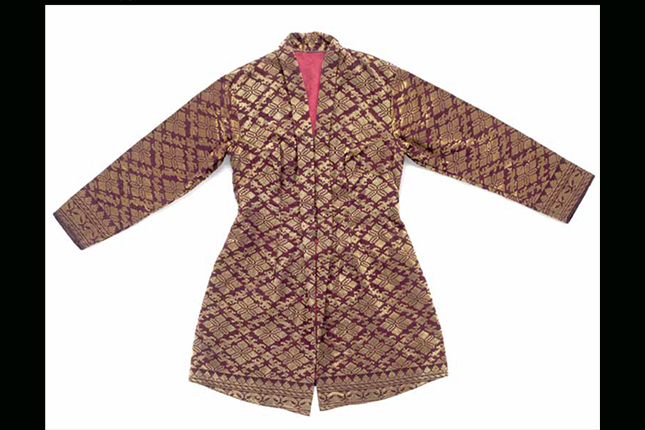
Collection of the National Museum of Singapore.
It was hoped that through this exhibition of Western and traditional wedding costumes, visitors would appreciate the common values shared by the different ethnic groups in Singapore, and also discover how the Western wedding dress has been integrated into the wedding customs and costumes in our multi-racial society.
Chung May Khuen is Curator, National Museum of Singapore.




